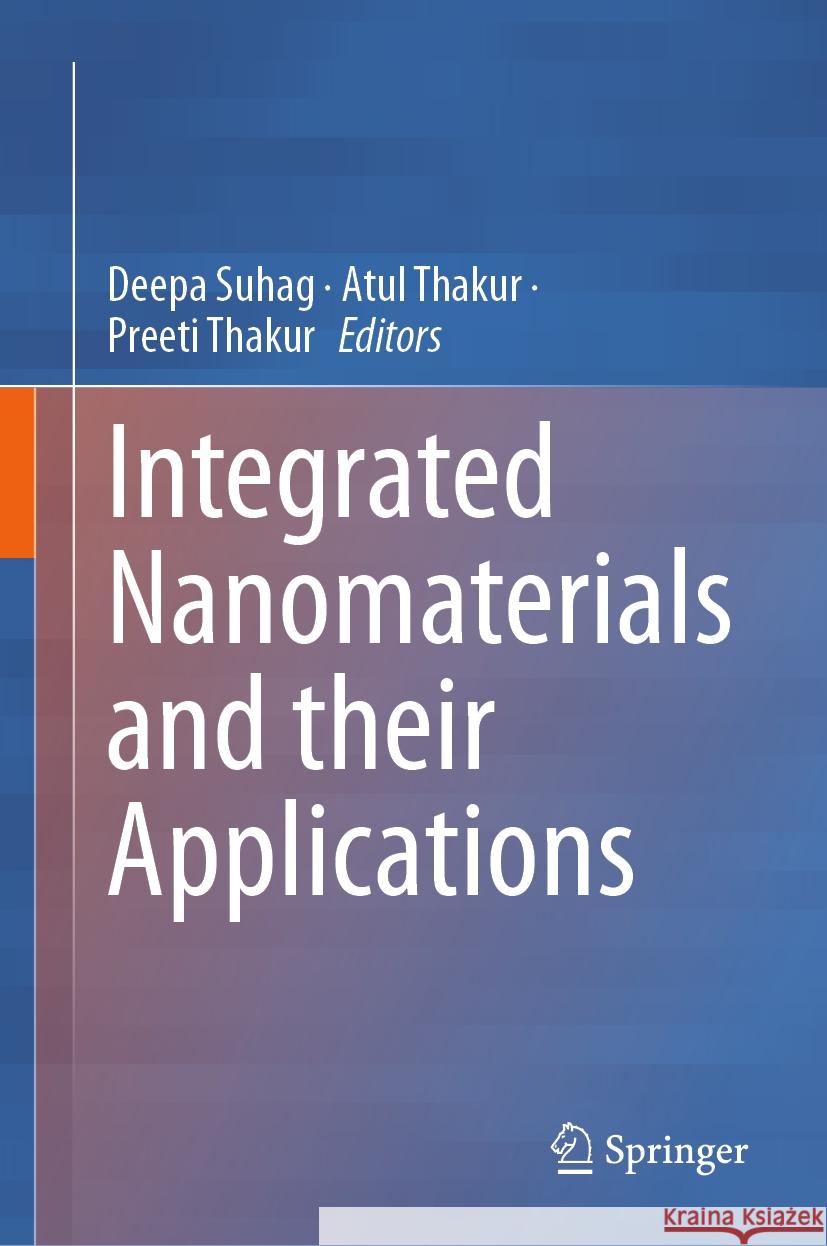Integrated Nanomaterials and Their Applications » książka



Integrated Nanomaterials and Their Applications
ISBN-13: 9789819961047 / Angielski
Integrated Nanomaterials and Their Applications
ISBN-13: 9789819961047 / Angielski
(netto: 613,40 VAT: 5%)
Najniższa cena z 30 dni: 616,85
ok. 22 dni roboczych
Dostawa w 2026 r.
Darmowa dostawa!
Chapter 1_Introduction. -Chapter 2_Everyday Nanotechnology. -Chapter 3_ Classification and types of nanomaterials. -Chapter 4_ Structural Properties of nanomaterials. -Chapter 5_ Carbon Nanomaterials in the field of Nano/bio-medicine and therapeutics. -Chapter 6_Mxene nano-materials for medical applications. -Chapter 7_Metal Nanoparticles in the field of Nano/bio-medicine and therapeutics. -Chapter 8_Polymers and polymeric composites in Nano/bio-medicine. -Chapter 9_Bio ceramics Nano/bio-medicine. -Chapter 10_Biocompatibility, Bio-clearance and Toxicology. -Chapter 11_Functionalization of Biomaterials. -Chapter 12_Bioprinting for Therapeutics. -Chapter 13_Biomaterials for Precision Medicine. -Chapter 14_Nanotechnology for AI in Healthcare. -Chapter 15_Nanomaterials in Bioimaging and Diagnostics. -Chapter 16_Bioinspired Nanomaterials. -Chapter 17_Nanomaterials for Environmental Applications. -Chapter 18_Nanotechnological Applications in Food and Agriculture. -Chapter 19_Nano-/ Mesoporous Materials as State-of-Art Military Applications. -Chapter 20_Toxicology and Toxicity Studies of Nano-bio materials. -Chapter 21_Remediation perspectives. -Chapter 22_Impact of Nano-biomaterials on the world.
Dr. Deepa Suhag is working as assistant professor, Amity Centre for Nanotechnology, Amity University, Haryana, India. She has obtained her PhD from Amity University Uttar Pradesh, Noida, in 2017. She has published 25 research articles in major international journals and has filed 6 patents. She also has one granted patent in her name. Her research area spans from biomaterial engineering to wound healing and tissue regeneration.
Prof. Atul Thakur is working as Director, Amity Centre for Nanotechnology and Amity School of Applied Sciences, Amity University Haryana and figured among top 2% of researchers by Stanford University ranking. A post doctorate from the University of Brest, France and thereafter fromNational Taiwan University, Taiwan, Dr. Thakur has completed his M.Phil. and Ph.D. from Himachal Pradesh University, Shimla, India. He has published 4 books and more than 150 research papers in International, peer-reviewed, SCI and Scopus-indexed journals. His research are ferrites nanomaterials for water purification, agricultural applications, microwave, high-frequency applications, radar-absorbing materials, antenna miniaturization, high-density memory storage systems, sensor applications and metamaterials. Dr. Atul Thakur has filed 45 patents to date. Dr. Thakur has delivered several talks in National and International conferences around the world. He has successfully completed several government-funded projects sponsored by ANR, DRDO, MNRE, DAE and bagged prestigious International grant from the Royal Academy of Engineering UK.
Prof Thakur is adjunct Faculty at Yuan Ze University Taiwan and a Distinguished Professor at Nanjing University of Information Science and Technology China.
Prof. Preeti Thakur is currently working as Head, Department of Physics, Amity School of Applied Sciences, Amity University, Haryana. A post-doctorate from Taiwan and a Gold medalist in Masters; she has completed her PhD in physics from Himachal Pradesh University, Shimla. She has more than 20 years of teaching and research experience. Her areas of research include synthesis and characterization of magnetic nanoparticles for radar-absorbing materials, sensors, high frequency, wastewater treatment, biomedical and agricultural applications. She has more than 140 publications in SCI/Scopus indexed international journals and filed 44 patents and is a reviewer of international indexed journals.
The book provides an overview of different nanoparticles, their classification, and their applications in healthcare, food sciences, environmental sciences, and agricultural sciences. The introductory chapters discuss different types of nanoparticles, their types, and their structural properties. The subsequent chapter examines factors that influence the biocompatibility and toxicity of NPs for the safe and sustainable development of emerging nanoparticles. The chapter systematically reviews the nanoparticle-based contrast agents employed in most common biomedical imaging modalities. The book further examines the applications of advanced nanoparticle design that are utilized for both non-personalized and precision applications for improving precision therapies. The book provides a comprehensive update on nanoparticles’ toxic effects, the factors underlying their toxicity, and the mechanisms by which toxicity is induced. This book is an ideal guide for researchers and students interested in understanding the applications of nanoparticles in biomedical sciences and the healthcare sector.
1997-2025 DolnySlask.com Agencja Internetowa
KrainaKsiazek.PL - Księgarnia Internetowa









